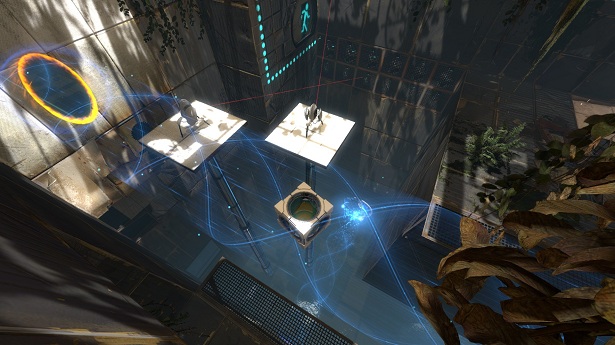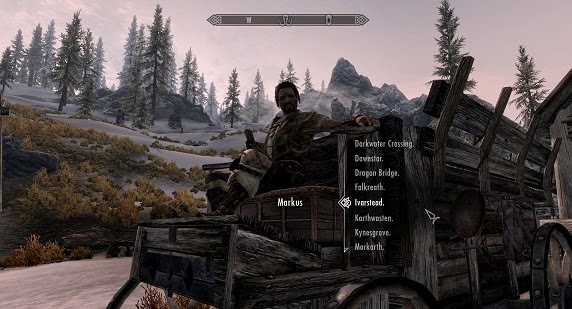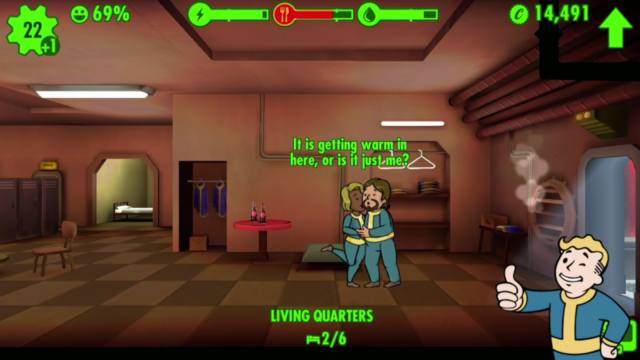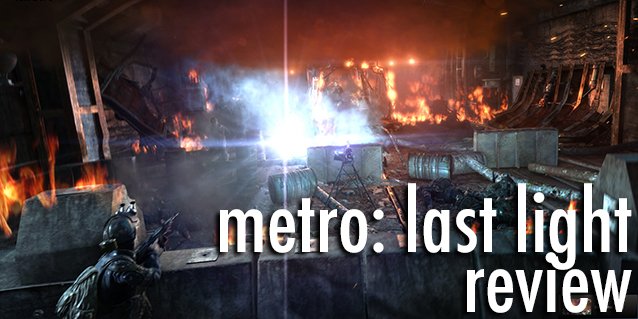

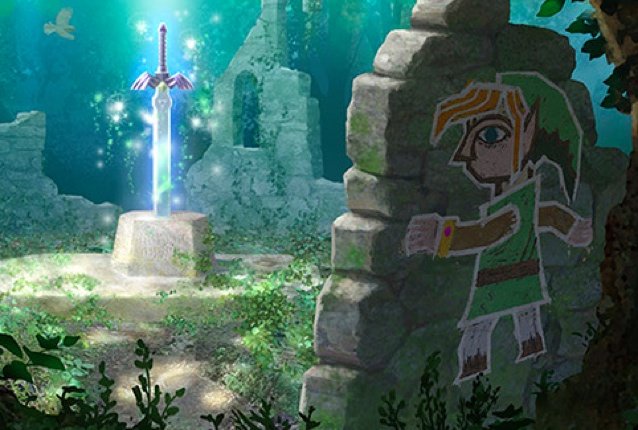
The Legend of Zelda: A Link Between Worlds (LBW from here on) is the sequel to the 1991 hit The Legend of Zelda: A Link to the Past. Popularly referred to as LttP by fandom.
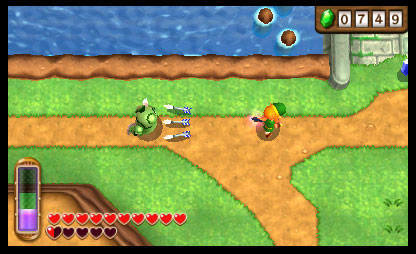 LBW is very much a sequel and comes with all the things that statement indicates. It prides itself on its pedigree, it takes all the same ideas and mechanics as previous games and serves them to us again. It's a rehashing in the best sense of the word. Much has been said about Zelda sequels in the past. Some have been considered lacklustre and dry (Phantom Tracks), to underrated but excellent (Majora's Mask), to ok but forgettable (Phantom Hourglass). A Link Between Worlds is at its best a fantastic remix of an older game. The story might be new, the items and dungeons may be different, but it's heart and soul are very much the same as LttP.
LBW is very much a sequel and comes with all the things that statement indicates. It prides itself on its pedigree, it takes all the same ideas and mechanics as previous games and serves them to us again. It's a rehashing in the best sense of the word. Much has been said about Zelda sequels in the past. Some have been considered lacklustre and dry (Phantom Tracks), to underrated but excellent (Majora's Mask), to ok but forgettable (Phantom Hourglass). A Link Between Worlds is at its best a fantastic remix of an older game. The story might be new, the items and dungeons may be different, but it's heart and soul are very much the same as LttP.
Anyone who played LttP in its day likely has a fond memory or two of it on tap. Maybe the first time they entered the Dark World, or their favourite dungeon. The memory that stands out to me will always be the fight against Blind in Gargoyle's Domain. After fighting your way through three floors of Stalfos and Zazakkus, you rescue a maiden from a dungeon cell and take her to a room where the sunlight floods in and she reveals herself to be the boss, Blind. It's a strange moment for the player as you expect this to be a generic escort mission and it becomes you dealing with a wolf in sheep's clothing instead. The fight itself was simple and straightforward, but the sting of shock and betrayal have stayed with me after all these years.
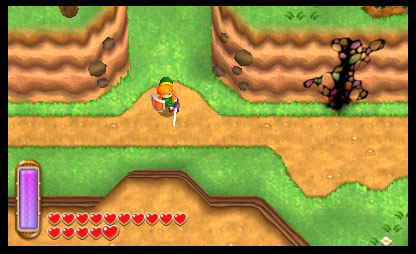 This game takes place six generations after LttP. The layout of the map is still pretty much the same as before. There are few minor changes that litter the overworld: Mother Maiamai's cave being the most important addition. The alternate world of Lorule (a little joke on Hyrule) has a different issue besides the name, the entire overworld is not connected. In LttP, you could use the difference between the Dark World and Light World to traverse obstacles as easily as gazing into the Magic Mirror. In LBW, you need to hike from one area to another in order to probe the limits of the world and find where your appropriate warps to the alternate world. Luckily, the game tags where the holes between worlds are on the map with a rainbow stripe. However, occasionally this lack of connection can be a bit annoying with some areas accessible by only one warp. Once you unlock the fast travel markers things become infinitely easier to manage, but until that point its a bit trying.
This game takes place six generations after LttP. The layout of the map is still pretty much the same as before. There are few minor changes that litter the overworld: Mother Maiamai's cave being the most important addition. The alternate world of Lorule (a little joke on Hyrule) has a different issue besides the name, the entire overworld is not connected. In LttP, you could use the difference between the Dark World and Light World to traverse obstacles as easily as gazing into the Magic Mirror. In LBW, you need to hike from one area to another in order to probe the limits of the world and find where your appropriate warps to the alternate world. Luckily, the game tags where the holes between worlds are on the map with a rainbow stripe. However, occasionally this lack of connection can be a bit annoying with some areas accessible by only one warp. Once you unlock the fast travel markers things become infinitely easier to manage, but until that point its a bit trying.
The Legend of Zelda series excels at its ability to teach the player its habits and tendencies early on. New players quickly get up to speed on combat's basics and the game then quickly builds on those basics to teach the player more advanced tactics and puzzles.
Traditionally, Zelda games have you acquire an item within a dungeon and that item goes on to be the missing piece in a variety of puzzles you've passed already. That same item is also the key to defeating the dungeon's boss. This raises a few issues for the player. The foremost being: If everyone in a dungeon has a weakness exploited by a certain item, why do they keep it around? The other issues are related to the overall gameplay itself. If most of a dungeon is centered around a single item, it removes the difficulty in the puzzles by telling you what the solution is right? Well no. Zelda games as a whole tend to flip that idea on its head. Figuring out what item to use is only the first and easiest step to solving a puzzle. Much of the time the games will compound previous puzzle skills into new puzzles. The further along in the game you are, the harder the puzzles become as a result.
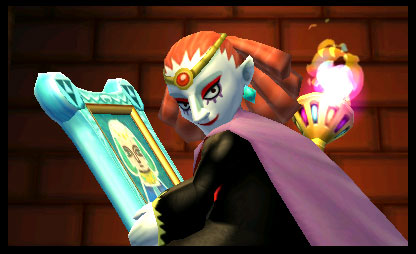 LBW has tried something very different in regards to tradition. Instead of acquiring a single item in the dungeon to then use as a puzzle piece; you can rent items from your new friend Ravio. You pay him a fairly small amount of rupees, up to a max of 120 rupees, to rent the item for as long as you want or until you fall in battle. You can rent as many items as he has and you can afford. For those looking to do just the main quest, this greatly speeds up the process of exploring the overworld. You pay a little bit of money to rent every item and just burn through the dungeons. Many players wondered what the value in purchasing items is, wel for a skilled player who only wants to do the storyline, nothing. There is no real value in saving the 800 or more rupees for a single item. The wands will run you 1200 rupees each. For ownership. However, one of the sidequests in the game allows you to upgrade your items. The catch being you need to own your item in order to be able to upgrade it. The other advantage is, when and if you fall in battle, you don't have to trek back to Ravio's just to re-rent your items. Depending on how much you are exploring, this can be either a massive headache, or a minor nuisance.
LBW has tried something very different in regards to tradition. Instead of acquiring a single item in the dungeon to then use as a puzzle piece; you can rent items from your new friend Ravio. You pay him a fairly small amount of rupees, up to a max of 120 rupees, to rent the item for as long as you want or until you fall in battle. You can rent as many items as he has and you can afford. For those looking to do just the main quest, this greatly speeds up the process of exploring the overworld. You pay a little bit of money to rent every item and just burn through the dungeons. Many players wondered what the value in purchasing items is, wel for a skilled player who only wants to do the storyline, nothing. There is no real value in saving the 800 or more rupees for a single item. The wands will run you 1200 rupees each. For ownership. However, one of the sidequests in the game allows you to upgrade your items. The catch being you need to own your item in order to be able to upgrade it. The other advantage is, when and if you fall in battle, you don't have to trek back to Ravio's just to re-rent your items. Depending on how much you are exploring, this can be either a massive headache, or a minor nuisance.
This small change has a profound effect on the way the game is played. Now, you can choose your next dungeon and can do them in virtually any order you choose. If you start a dungeon and decide you want to come back to it after clearing another one, you can. If you only rent your items and you painstakingly push through the dungeon only to fall during the boss battle, you'll have to drop plans for revenge, just so you can go get all your items back. It also means that since you can't stack learning experiences to make successive puzzles more difficult and more involved, the difficulty of every dungeon drops significantly.
Most of the items also serve interesting uses in combat. Much more than previous games, they are a lot more easily used in a comfortable fashion. This isn't quite like the deku nuts of Ocarina of Time, but there is actually an item that's basically the same. There are many familiar items from previous games making a return. The standards are all back: Hookshot, bow, boomerang, bombs, and bottles. The bug-net and the lantern also make a return. There are a few variations on items from previous games that make a return. Though I suspect most players will lean towards using the Fire Rod as it is quite powerful, I found myself using the Tornado Rod as a good way to stun a group and then drop a bomb between them. A combination I would not really have thought of in previous games. Normally I would slash until the job is done. I found LBW's design does occasionally push the player to experimenting a bit. Combat on ice for instance forces you to reconsider using your sword on perilous narrow platforms.
Music in this game are rearranged versions of songs from A Link to the Past. Many of them still evoke the same sense of excitement and wonder when traversing the overworld and dungeons. The sounds as well are updated versions of a LttP.
 The use of 3D in this game is exemplary, many puzzles become more interesting and challenging when observing them in the third dimension. A few times I turned off my 3D just to see what a puzzle played like in 2D and while every puzzle is solvable in 2D, it lacks the same excitement as timing a run between platforms that are zooming towards and away from the player. Lining up jumps in a few dungeons could be very frustrating in 3D. The edges of the platforms not always clear against animated backgrounds. That issue happened so rarely during my playthrough it isn't worth worrying over. Worth mentioning, but not much else.
The use of 3D in this game is exemplary, many puzzles become more interesting and challenging when observing them in the third dimension. A few times I turned off my 3D just to see what a puzzle played like in 2D and while every puzzle is solvable in 2D, it lacks the same excitement as timing a run between platforms that are zooming towards and away from the player. Lining up jumps in a few dungeons could be very frustrating in 3D. The edges of the platforms not always clear against animated backgrounds. That issue happened so rarely during my playthrough it isn't worth worrying over. Worth mentioning, but not much else.
Combat hasn't really changed at all. The downside of being sourced almost entirely from LttP is that many of the boss battles in LBW are either similar or the same as in the original. Many of the bosses are carry overs with minor changes. For instance, the previously mentioned Blind reappears as a boss with a pair of swords and none of the concealed betrayal of the previous game. He feels bland by comparison and is sadly even easier in this game. For vets of the series, this game is not going to challenge your combat skills. The Treacherous Tower, which is intended to be a place for players to demonstrate their combat skill, is a pushover for even new players.
The game offers a 'Hero Mode' after you finish the game, but by that point you've already breezed through many battles a little bored and likely won't feel the desire to go back again. Hero Mode should have been made an option right away, especially if difficulty was something they intentionally reduced. For new players and younger players this is a blessing, but for anyone else, it makes the game frustratingly easy.
The Legend of Zelda: A Link Between Worlds is a very enjoyable game. It's a treat to play. The revisiting of a familiar place in a different time is exciting and fun. The lower difficulty of puzzles and combat will be a minor frustration for returning fans but that's not really enough to look down on this game. Even as an easier game overall, its still great and sharp experience. As a Zelda fan, its absolutely worth playing. For someone interested in the series but never having had a chance to start, here's where you should hop in.
9 out of 10
A copy of the game was purchased by the reviewer.
